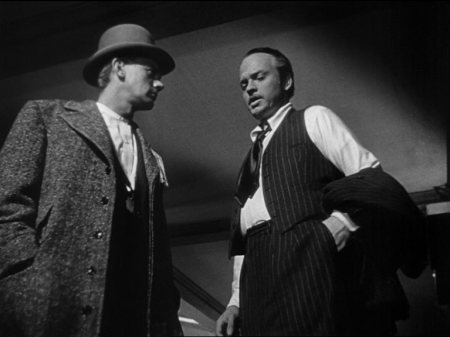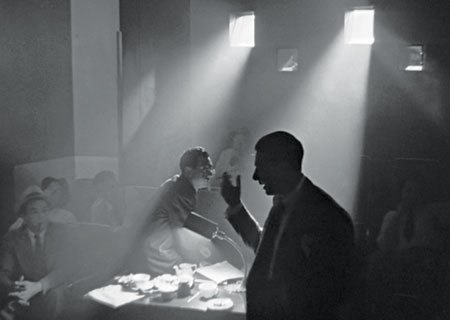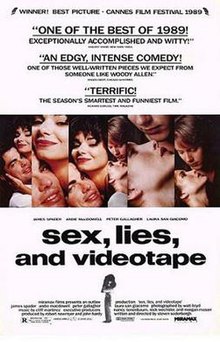Due to our perception of the world on a day to day basis, we often look at the passage of time as linear. This results in most storytelling following a path we are comfortable with understanding. As with words on a page where we are trained to follow from the left to the right, we have a conditioning for how we expect to consume media. Books, radio, and other mediums are defined by their narrative structure and can be shackled by it, with obvious exceptions. Film, however, is not only defined by the method of its narrative. Film's ability to tell a story can be amplified, tossed away, or even made unimportant to the project with the use of many different techniques and processes. From surreal films like La Jetee, which uses mostly still photos to produce an other-worldly feel, to The Arrival of the Train, which uses the positioning of the camera to elicit a dynamic with the audience that cannot be replicated in other mediums, film is set apart and defined by more than just it's narrative structure.
In the Golden Age of Hollywood, no film has been more groundbreaking and revolutionary than Citizen Kane. Orson Welles's 1941 masterpiece helped shaped the way movies are made with its revolutionary cinematography from Gregg Toland, non linear narrative from both Welles and Herman J. Mankewiewicz, editing techniques from Robert Wise, and powerful musical score from Bernard Herrmann. But the history of the film and how these elements pioneered film making is as legendary as the film itself.
 |
| Orson Welles (1915-1985) |
Citizen Kane is the first film made by Orson Welles, a child prodigy of stage production and the creator of his innovative Mercury Theater productions on radio. By October 30th 1938, he was well known for his infamous broadcast of H. G. Wells The War Of The Worlds, which reportedly horrified the audience so much, people thought there was an actual alien invasion. Shortly after the controversial broadcast, Hollywood began to see Welles as a potential film maker.
After Welles arrived at RKO Pictures, he signed a contract that allowed him to make any movie he wants to make. His original plan was to make a film adaptation of Joseph Conrad's Heart of Darkness, which would have been filmed in a first-person perspective. But that was proven too difficult, so the project had to be scrapped. Of course, Heart of Darkness would later be translated into Apocalypse Now by Francis Ford Coppola in 1979.
 |
| William Randolph Hearst (1863-1951) |
After the cancellation of the Heart of Darkness project, Welles teamed up with screenwriter Herman Mankiewicz to make a satirical drama about the life of Charles Foster Kane, loosely based on the legendary newspaper tycoon, William Randolph Hearst. Rather than writing a traditional narrative, Welles and Mankiewicz had written a series of interlocking flashbacks to create an enigma of Kane's last word before his death, "Rosebud." Film theorist Laura Mulvey argues, "Citizen Kane is about an enigma and the enigma is refracted through a text that creates a strong appeal in its spectator to read clues and to decipher meanings."
 |
| Gregg Toland (1904-1948) |
Another innovation in the film is the use of ceilings. Most movies sets back then don't have ceilings because that's where they hid the microphones for actors to record the dialogue. The ceilings were made of muslin so it would be easy for the microphone to record the dialogue on the set. Citizen Kane also pioneered the way how low angles are achieved. In the scene when Kane talks to his friend Jedediah Leland after his political career was backfired, Welles and Tolland has put a hole on the floor to position the camera.
Matte paintings were used for the famous opening scene of the film in which we get to see Kane's palace, Xanadu. The scene opens with a gate that contains a "NO TRESPASSING" sign and the camera pulls up so the audience can trespass into Kane's world. Through images of gates, animal shelters, a lake, and an abandoned golf course, we get to see a matte painting of Xanadu enlarging through dissolves.
Optical effects was used for scenes that are difficult to film in deep focus. The scene which Kane fires Leland while finishing his negative review of Susan Alexander's opera performance is an example of optical effects because Kane writing the review and Leland walking to the office were filmed separately and composited together by an optical printer. Optical effects were also used for the famous shot which takes place at the disastrous opening night at Susan Alexander's opera. The live action footage was used for the opera and the two stagehands who are looking at each other because of Alexander's bad singing. Miniature shots were created for the stage equipment as the camera goes up the stagehands. These 3 elements were put together by an optical printer.
One of the most common special effects techniques used in the Golden Age of Hollywood is rear-screen projection, which is when an actor is filmed against a screen that contains previously recorded footage. Rear-screen projection was used for the scene when Kane takes Susan Alexander to a picnic. For some reason, the pre-recorded footage has animated pterodactyls.
Citizen Kane also pioneered the way movies are lit using light and shadow to add atmosphere and mystery. Shortly after the News on the March montage that opens the film, we cut to a screening room filled with reporters and we mostly see them in dark areas and dim lights. We barely get to see their faces and the characters were lit in darkness to turn them into silhouettes, adding atmosphere to the scene. Robert Carringer argues, "If the lighting and Kane castle the-secret-of-the-old-dark-house motif seem displacements from Gothic horror thrillers, the projection room sequence make Rosebusd sound like the 'Hey, lets put on a show' gimmick of popular musicals."
Another revolutionary area from Citizen Kane is the use of the montage. After the groundbreaking Odessa Steps montage in Sergei Eisenstein's Battleship Potemkin (1925), Welles pioneered the use of the montage with the famous breakfast sequence to express the destruction of a marriage through time and space. Welles also used symbolism, such as flowers and silverware separating Kane and his first wife and the couple reading opposite newspapers, to express the troubled marriage through the course of the scene.
In addition to all the techniques and examples in Citizen Kane mentioned above, another example of what can define film aside from it's narrative structure can be found in The Lumiere Bros Arrival of the Train (1895). Film professor Martin Loiperdinger argues, "Everybody has seen a railway rushing on the scene of a film. It seems to be coming straight at the audience. The effect is most vivid because of the dynamic power of the forward-rushing movement is enhanced by another source of dynamics that has no inherent connection with the object itself, that is, with the locomotive, but depends on the spectator, or - in other words - of the camera." The argument being made is that, while everyone has seen a rushing train, film provides an opportunity to present a perspective and an overall experience that is unable to be replicated in non-visual mediums.
Film, unlike other mediums for storytelling, or the expression of ideas, has an entire cache of tools at its disposal to help us consider the world around us and to present the things in our lives that we have a hard time placing our fingers on in a direct way. Whatever that is placing us in the perspective of an oncoming train, or using matte paintings to to show us a different perspective of the world around us, the tools that film has at its disposal ultimately defines it as a separate and unique medium.






